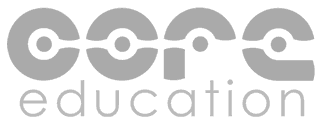Surfing the crest of the wave
1979 - My involvement with computers probably started in 1979 with someone leaving an Evening Standard on a London tube seat on the day my husband was made redundant. He replied to the ad ‘Made Redundant – take a TOPS course in computer programming.’ I was starting a PGCE and took Computing as an option.
Our careers have developed in parallel each with a computers in education theme.
1980 - In my first year of teaching in Enfield, my students raised money for a Sinclair ZX81 through a sponsored sunflower growing competition and later they raised money for Sinclair Spectrums. At home we had a Sinclair Spectrum. This required the use of the TV, a tape machine and the computer being connected – I found my three year old son fixing all this up one morning so he could play an early computer game. Not surprisingly perhaps, he now has an international business providing events and entertainment information via the internet and mobile phone (www.my247.mobi) .
1984 - Within a few years, the BBC computer initiative brought an influx of computers into schools – well four anyway to start with, and then a roomful all working individually and with a rapid succession of word processing programmes Wordwise and Edword for example. To change programmes, you had to open up the computer and change the chips.
This introduction of computers was coupled with the introduction of the Technical Vocational Education Initiative (TVEI) which I coordinated in the school. Schools were linked up via computer and we were able to access an early version of what we now have on the internet today – TTNS it was called – The Times Network for Schools. We could also send messages to the other six schools who were connected up with us. I saw computer use motivate young people who were turned off education.
1986 – the next years saw the introduction of the Amstrads, the BBC Archimedes and RM Nimbus as well as early Apples and schools were having to opt for one system or another. There was no compatibility between the systems. Marvellous resources were built up but sharing was difficult as was coordinated development.
I moved to work as an advisory teacher at the LEA and when I asked for a computer I was told this would come at the cost of, for example, funds for the salary of a nursery nurse. Was my need for a computer more important? I was asked.
1989 – I was by now a research officer on a Department for Education and Science (DES) project at Cambridge University and I found the Education department was installing BBC networks when it seemed to me that Apple was a clear leader.
1994 – 2008: The early work in school with e-connections between the schools began my interest in how the internet can be used for education and particularly professional development which led to my work as founder member of Teachernet (www.teachernet.gov.uk )with Richard Millwood, Norbert Pachler, Darren Leafe and others including Christina Preston (and the support of lots of companies now funded by the DCSF).
In 1995, European SchoolNet (www.eun.org) funded by the European Union.
In 2004 the Teacher Training Resource Bank (www.ttrb.ac.uk ), funded by Training and Development Agency (TDA) and in 2006 Online Communities of Practice for local government (www.communities.idea.gov.uk ), funded by the Improvement and Development Agency for local government, IDeA.
In between, there have been various projects in Zambia, Mexico, Hong Kong, Australia as well as many European Countries. Being part of the MirandaNet community has provided a useful thread of connection with like minded people. I feel I have been surfing the crest of the wave of innovation since the early 1980s and it has been a lot of fun. What will be the next big innovation?
Lessons learnt
I am sure the way to get there is to allow lots of space for people and students to be creative with what technology we have now.

